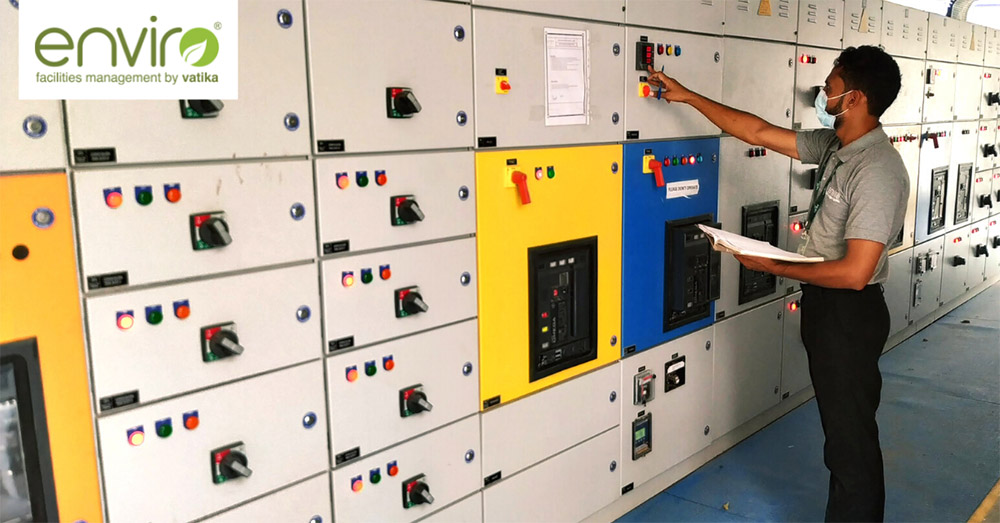According to a study, it is said that Planned Preventive Maintenance results in a whopping ROI of 545%(on an average) vis-à-vis Reactive Maintenance which is said to eat into your company’s Operational and Maintenance budget by 40%.
Not only this, in case of an emergency breakdown of the equipment your facility production targets can be set back by hours or in some cases even days at a stretch.
To break it down further, here are 5 essentials comparisons you must take into consideration before you decide to invest your company’s money and restrategise your O&M budgets;
1. Zero Downtime Focused vs Repair Focused
Imagine a scenario when your equipment breaks down, suddenly. To get it up and running again and perform optimally as quickly as possible, you would be forced to spend extra money to outsource machine specialists, pay extra for having missing parts shipped at the earliest and pay extra to technicians to work overtime.
Whereas, planned downtime allows you to schedule downtime or distribute maintenance tasks that would decrease disruptions effectively saving on money and thetime that the machine is out of order.
2. Preventive Maintenance vs Reactive Maintenance
Breakdown of machinery is unavoidable! However, the next step one must take is to realise the benefits of proactive vis-à-vis reactive maintenance. Once the asset has already broken down the technical expert will identify the problem and react with an immediate solution to get it back into operation.
However, such costly repairs in terms of money and time can be avoided by looking into its maintenance and wear and tear with a pre-planned schedule while it is still running, mitigating the risk of failure and unaccounted downtime.
3. Operational Efficiency vs Crisis Management
A company is known to be Operationally Efficient when the benefits it gains are higher than the resources it invests in the successful running of the business. The purchase and maintenance of company equipment is a part of the Operational and Maintenance costs.
In case the machine breaks down, the company has to resort to crisis management with Reactive Maintenance. Owing tothis run-to-failure scenario, the company has to bare huge financial losses. Whereas, Preventive Maintenance would mitigate the costs by allowing the technicians to arrest and identify a major breakdown by performing regular maintenance and look into the upkeep of the asset.
4. Equipment Longevity vs Equipment Replacement
The more breakdowns and major repairs a machinery goes through, the more its efficiency and lifespan decreases. By regularly looking into its upkeep and planning its maintenance you add more years to the life of the asset, as a result gaining more profit out of the resource.
The Useful Life of a tangible asset refers to the period of time a company can expect it to earn revenue out of it. By maintaining the life of an equipment and ensuring it runs optimally the company saves exorbitant early-replacement costs.
5. ROI based vs Temporary benefits based
It is said ‘that a business is as profit-efficient, as its resources’. Each resource engaged and invested in, is looked upon as an asset. Therefore, the strategy so planned should be based on a futuristic Return on Investment model and not the temporary and immediate benefits it offers. The lifecycle of a machinery includes its wear and tear and regular maintenance.
The ROI is going to be optimal when Planned Preventive Maintenance is a part of it, as it accounts for the costs to be incurred in its upkeep and mitigates the scope of any unplanned breakdown, that would lead to huge financial losses till the equipment is back to running smoothly.
Companies that run on a Reactive Maintenance model might look at Preventive Maintenance as an unjustified overhead cost at first until they realise it would cost them more; in terms of money and time to repair the machinery that broke down unexpectedly.
To conclude, a successful, cost-effective maintenance strategy is one that has Planned Preventive Maintenance as its main focus.





 WhatsApp Business +91 88000 09776
WhatsApp Business +91 88000 09776
 CSC
CSC  WhatsApp Business
WhatsApp Business 